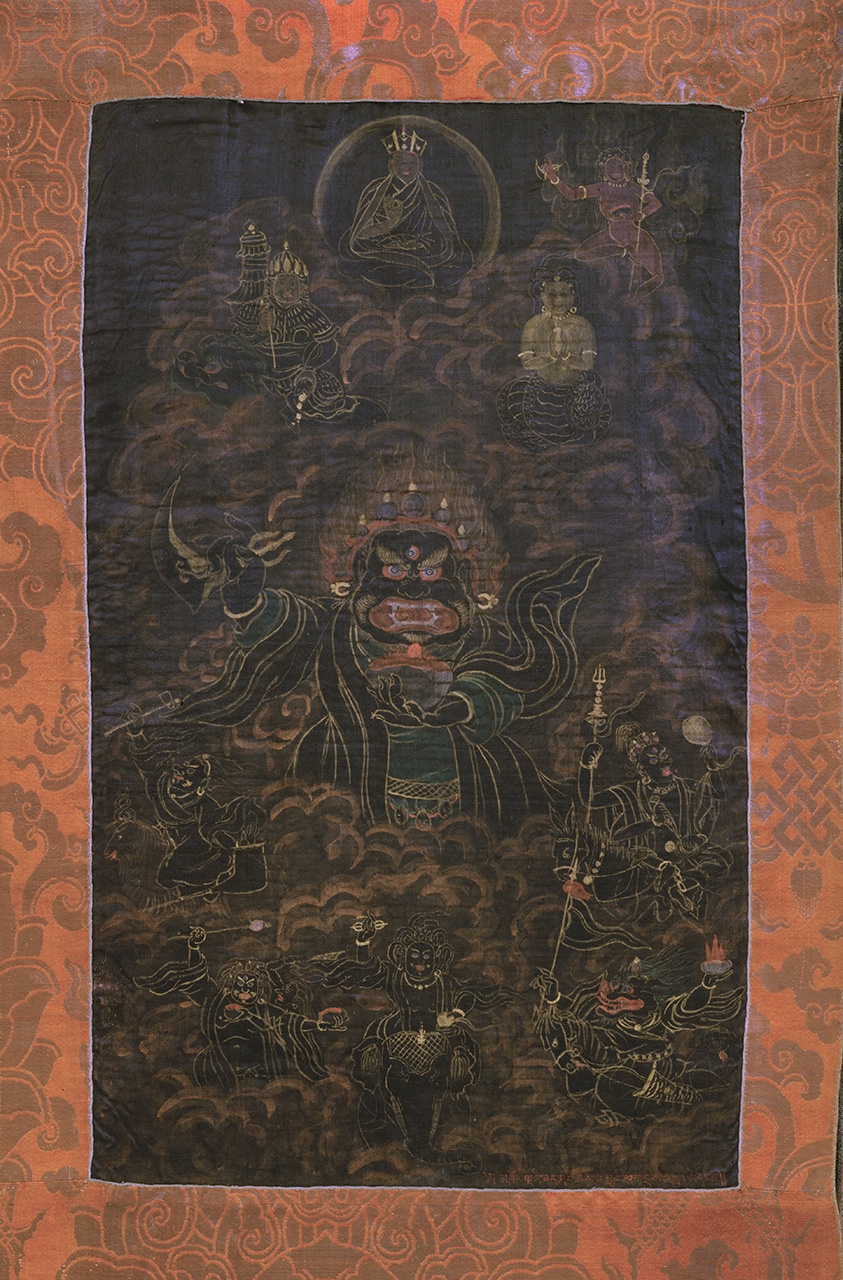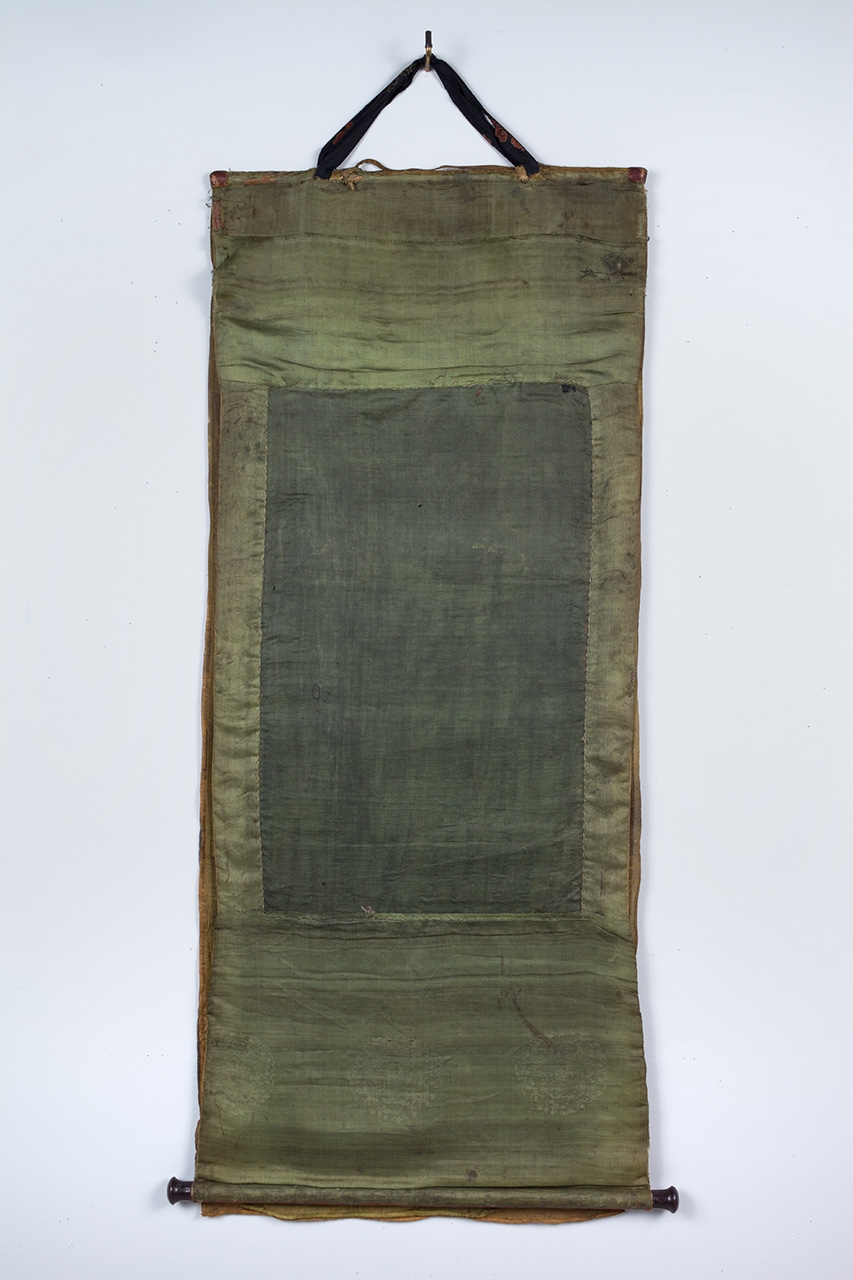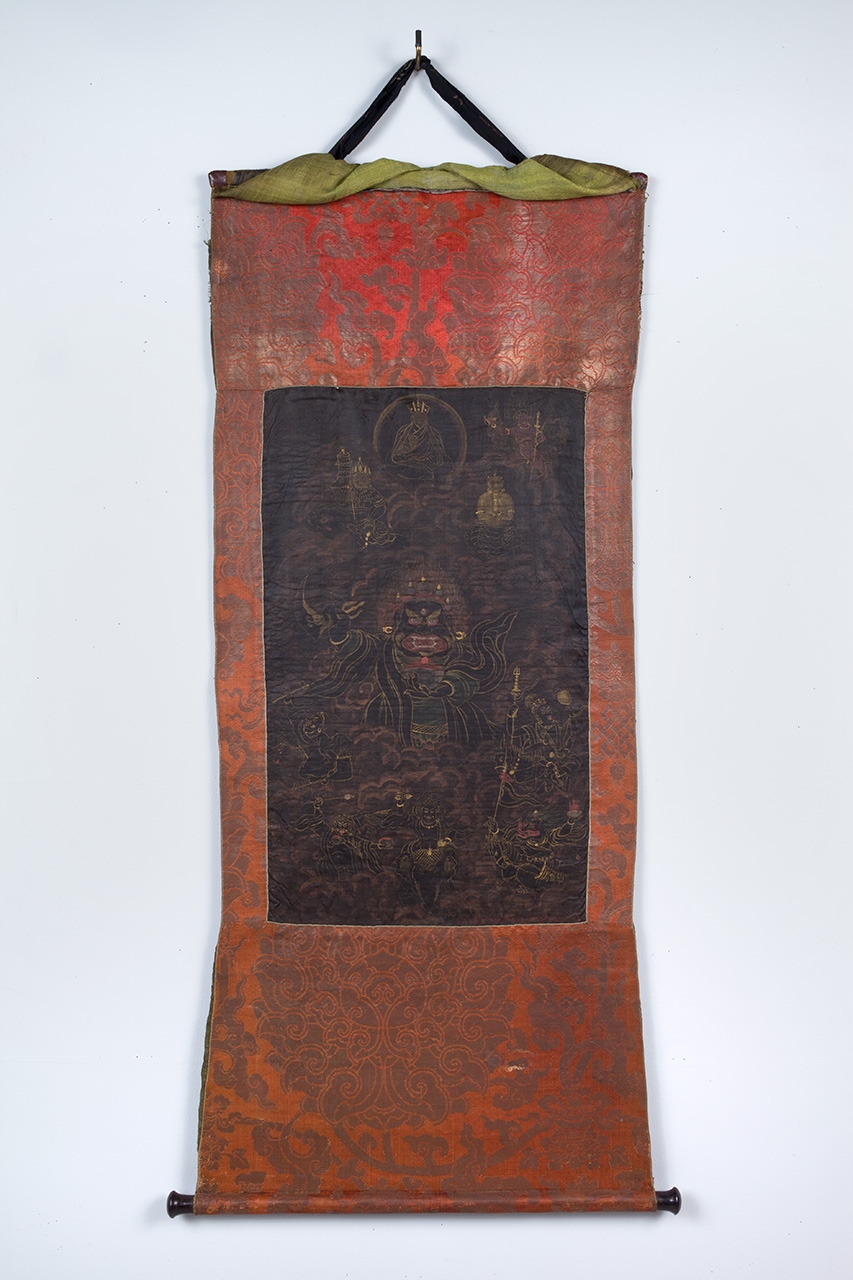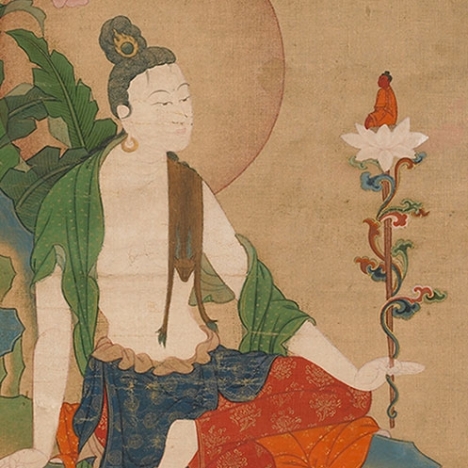
The subject of this simple yet expressive painting is Black Cloak Mahakala, the special protector of the Karma Kagyu School of Tibetan Buddhism, and their hierarchs, the Black Hat Karmapa lamas. The vibrant lines of the protector’s face dominate the composition, and the subtle use of a green wash in the tunic accentuates the blackness of Mahakala’s cloak on an already black ground, thus foregrounding the characteristic feature of the deity. This reflects a delicate aesthetic sensibility employed in the service of iconographic clarity.
Ink on silk is an unusual medium in Tibetan painting and is more typical of Chinese painting. Also distinctive here are the sensitive depictions of animals, such as the realistic elephant at bottom center. Both these qualities are associated with paintings attributed to the Tenth Karmapa (1604–1674), which suggests that this work was inspired by his unusual style.
An inscription in the bottom-right corner attributes the painting to Situ Panchen (1700–1774), an important scholar-artist of Kham Province, in southeastern Tibet. The silk brocades of this painting are also in the mounting style of Situ’s seat Palpung Monastery and help to tie this work to that artistic center and Situ himself.
22 3/4 x 13 7/8 in.; 44 1/2 x 22 in. with brocade border
C2002.8.4, HAR65083
- https://dev.rubinmuseum.org/images/content/714/c2002.8.4har65083__zoom.jpg
- https://dev.rubinmuseum.org/images/content/714/c2002.8.4har65083_back__zoom.jpg
- https://dev.rubinmuseum.org/images/content/714/c2002.8.4har65083_border__zoom.jpg
- https://dev.rubinmuseum.org/images/content/714/c2002.8.4har65083__zoom.jpg
- https://dev.rubinmuseum.org/images/content/714/c2002.8.4har65083_back__zoom.jpg
- https://dev.rubinmuseum.org/images/content/714/c2002.8.4har65083_border__zoom.jpg




